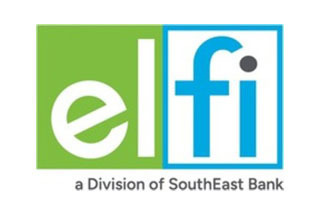Paying for College Soon? Here's How to Protect Your 529 Plan Amid Market Uncertainty

Alonso Rodríguez Segarra fielded a frantic call in April from a graduate student who had a big tuition bill due — and an educational savings account that had just cratered in value.
“She was desperate,” says the founder of Boca Raton, Florida-based Advise Financial. “Most of her money was just in stocks and she was about to pay for her education.”
It's a nightmare scenario, but it’s one a growing number of investors should have on their radar. To cope with the ever-rising price tag of a college degree, some 17 million Americans have more than half a trillion dollars socked away in tax-preferred 529 plans. These plans, which are offered by most states as well as some financial institutions, allow after-tax contributions to be invested and grow, tax-free, as long as the withdrawn funds are spent on qualified educational expenses.
Many 529 plan savers keep their money in target-date funds that automatically shift from more risky allocations that are geared toward growth to more conservative ones as the expected date of withdrawal nears.
This is typically done by adjusting the ratio of stocks to bonds. In theory, this protects investors from weathering significant losses around the time they need to withdraw the money to pay school bills.
In practice, though, results can be mixed, says Tara Lawson, a wealth strategist at U.S. Bank Private Wealth Management. “It's helpful, but it's not perfect, because as we know, there are even times when the bond market is down."
Typically, bonds move inversely to stocks; when stocks are outperforming, bonds don’t do as well and vice-versa. But if volatility is high enough, even asset classes considered lower-risk can experience losses. This past April, Wall Street was alarmed by simultaneous falls in both stocks and bonds, a sign of acute investor pessimism. Fear that the Trump administration’s trade, tax and immigration policies could damage the economy sent the market on a roller-coaster ride this spring.
While stocks have largely recovered from the turbulence that skirted bear market territory, volatility remains high. When a market plunge collides with a tuition bill coming due, what are a parent’s options?
Money asked financial planners to share their best advice for keeping your college savings — and your sanity — intact.
Don’t cash out in a panic
It can be tempting to tuck your tail and run, or in the case of 529 plans, shift all your savings into safer assets when markets are in free fall. But that's a mistake, experts say.
“Avoid panicking and selling your positions, especially when you have the need for future growth,” Lawson says.
IRS rules stipulate that you can only rebalance a 529 plan allocation twice a year without incurring penalties. If you already made one change this year, then had a knee-jerk response — say, moving all those funds into cash — your money could be stuck on the sidelines while the market rallies.
What’s more, historical market patterns show that days of heavy losses are typically followed in short order by days of big gains, and missing out on those recovery days can do lasting damage to your earnings.
Sit tight and wait it out
If you don’t need the money right away, keeping your money in the 529 plan until the market recovers and you can recoup your losses is a good option, says Autumn Knutson, founder of Tulsa, Oklahoma-based Styled Wealth.
“If they have extra savings that's not allocated to another goal, they can use that and take the [529] money out later,” she says. This strategy is obvious if, for example, you've still got three years of undergraduate education to pay for and you can swing the first semester's bill through other sources, whether it be your existing savings, current income, a low-interest student loan or scholarships. But even if you're nearly through spending on qualified expenses — if your kid has only a semester or two left, for instance — you still have options. You can transfer a 529 plan to another family member via a rollover or by changing the beneficiary.
You may also be able to convert your college savings into retirement savings: As part of the SECURE 2.0 Act, rules were changed to allow 529 plan custodians to roll over up to $35,000 into a Roth IRA in the beneficiary’s name.
“The ability to transfer to a Roth IRA is very new, but there’s a lot of red tape around this,” Knutson cautions. For starters, ordinary Roth IRA contribution limits — $7,000 in 2025 — still apply, the beneficiary must have earned income of at least as much as you plan to roll over and the 529 plan the money is coming from needs to be at least 15 years old.
Give your risk tolerance a gut check
Since markets have largely recovered from the beating they took earlier this year, it's a good time for anyone with a 529 plan to take a pulse of how much risk they're comfortable with.
“Most families go with the enrollment date investment options and don’t think about it. Now is the time to think about it,” says Elizabeth Pennington, a senior associate at the financial planning firm Fearless Finance.
Even if your kids are still writing their names with crayons, the recent spate of volatility can serve as a good opportunity for a gut check, she says. “It's important for parents to think about how they would respond” if their kids were older and they had tuition bills looming.
“If the answer is they’d have to take on debt or couldn't go to that school, that tells me they're taking on too much short-term risk for their comfort level,” she says.
Don’t stay too aggressive for too long
Resist the temptation to keep your foot on the gas when stocks are climbing. “For a lot of my clients, I'd say if we need it in a five- to seven-year period, it should be in cash. By the time they’re a junior in high school, I want it in stable assets,” Pennington says.
This might seem like an overly-cautious approach, but Pennington says the limited investment options and ability to change allocations within 529 plans call for a more defensive strategy, particularly if you’re relying solely on that money to cover educational expenses.
“If this is the only money, stability at a certain point is more important than growth,” because you want to preserve the gains you’ve already earned, she says. Since stocks have rebounded from their April lows, right now might be a good time to lock in some of those gains.
Mitigate losses by spreading out withdrawals
For Rodríguez Segarra's unlucky grad student client, some loss was unavoidable, but he advised her to make incremental withdrawals rather than pull out the full amount she intended to spend on her education all at once. Many colleges have installment plans or deferred payment plans that allow you to chip away at your tuition bills incrementally rather than paying everything at the start of the semester.
"Let’s not try to sell your position at once," he told her. This way, at least some of her principal remained invested, which gave her the opportunity to recover some of her losses when stocks recovered in the subsequent weeks.
Rodríguez Segarra says the principle here is the same as dollar-cost averaging, a strategy that calls for making investments on a regular schedule rather than trying to time the market (which even professionals don't do very well).
"It's the only way we can average this damage," he says.
More from Money
These Are the Best Colleges in America Right Now
529 Savings Plans Could Get Even More Flexible Under GOP Tax Bill







